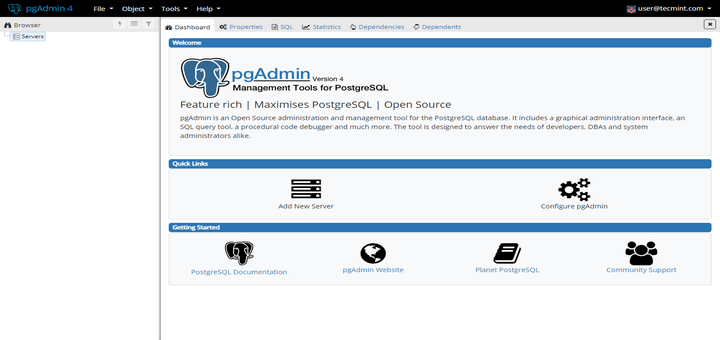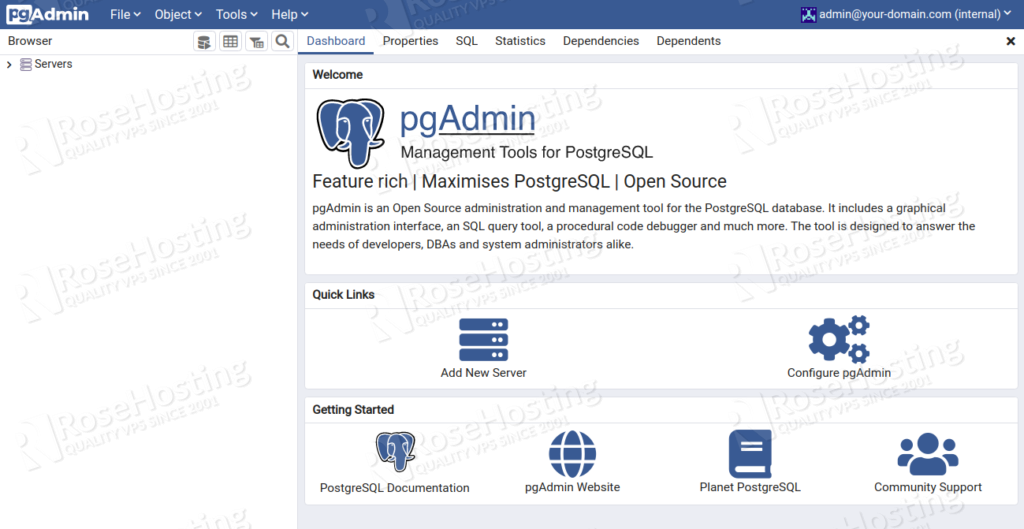

Test= > select name from people where company = 'Red Hat' Open a terminal window and run the following command while connected to the internet:
#Setting up pgadmin 4 install#
To get started, you'll need to install Postgres and some other packages. Once you've learned the basics, you can take your application a lot further with complex queries joining multiple tables, at which point you need to think about optimization, best design practices, using primary and foreign keys, and more.
#Setting up pgadmin 4 how to#
This tutorial explains how to install Postgres on a Raspberry Pi create a table write simple queries use the pgAdmin GUI on a Raspberry Pi, a PC, or a Mac and interact with the database from Python. It's easy to install, easy to use, easy to secure, and runs well on the Raspberry Pi 3. It'll feel familiar if you've used MySQL, but when you need more advanced usage, you'll find the optimization in Postgres is far superior.

Why PostgreSQL, commonly known as Postgres? It's considered to be the best open source database in terms of features and performance. It's fairly simple to set up a database for basic CRUD (create, record, update, delete) applications, which is a common pattern, and it is useful in many projects. A well-designed database can be efficient at looking up data in large datasets, and you won't have to worry about how it looks, just what you want it to find. You can write data in one session and it'll be there the next time you want to look.


 0 kommentar(er)
0 kommentar(er)
